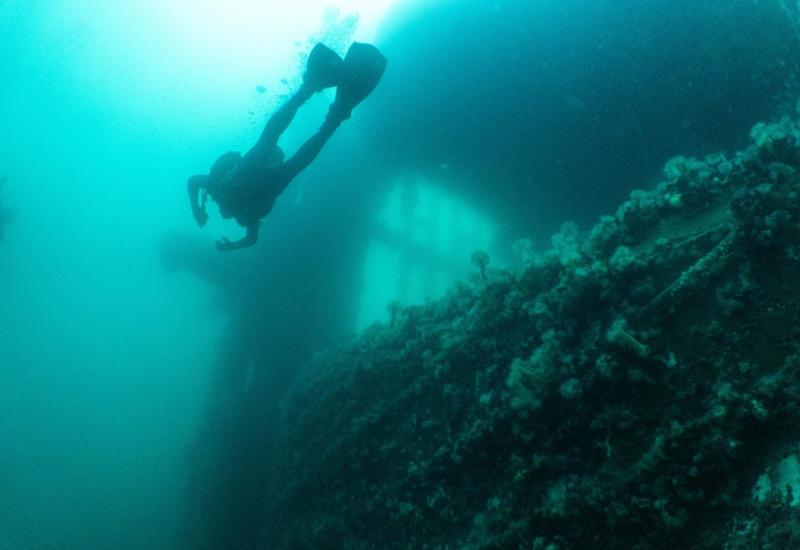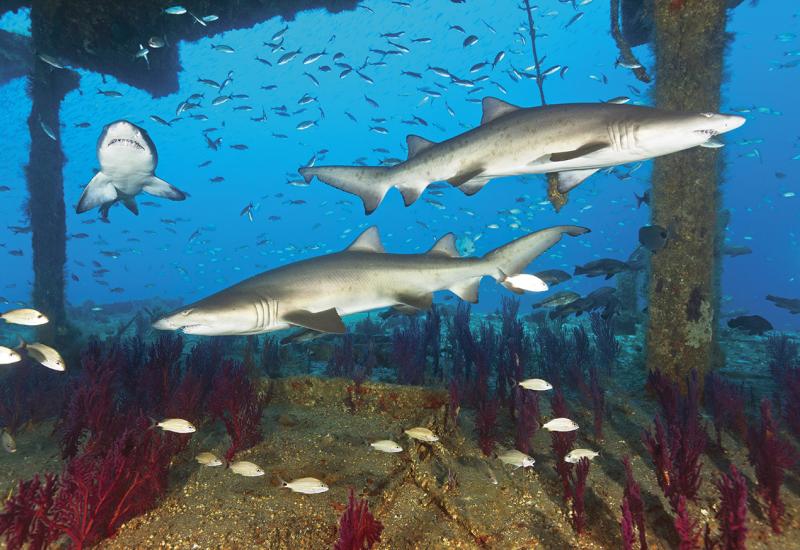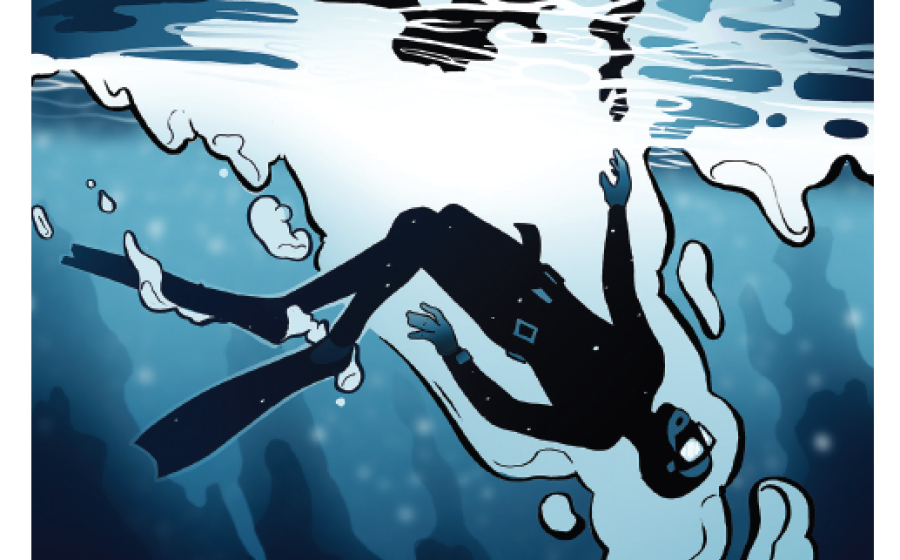Dive Log: Andros Blue Hole

Patricia WuestThis serene inland blue hole serves as the portal to a mysterious and beautiful subterranean cave system.
We were faced with another day of canceled dives due to rough ocean conditions that Small Hope Bay Lodge's owner Jeff Birch blamed on "Dry Rage"—when swells begin on the ocean floor, causing lousy vis and miserable chop. That ruled out any of the shallow or mid-level dives. Jeff said he could put us on a deep wall, but he said we'd still most likely contend with bad vis (on Andros, when vis typically is at least 100 feet, 30 feet is a bad day) and unpredictable current. We thought about jumping into an inland blue hole that we had visited yesterday, but then Jeff came up with a better plan, at least for the experienced divers in the group, all of who had cavern experience.
We'd go the The Guardian, a pristine inland blue hole that offers hundreds of feet of navigable tunnels. I had to opt out — the group was going to hit depths in the 140- to 150-foot range, and all of it, except when they off-gassed in the open-water "pond," in an overhead environment. Definitely beyond my training, so I was elected to tag along as surface support.
We jumped into Jeff's white Chevy pickup truck to get to the Guardian, about a 45-minute ride from Small Hope Bay.
And unless you know the island, you definitely need a guide to find the inland holes—there are hundreds of them and their underground cave systems honeycomb the island—and to find the trails that lead to them. Our perfect guides: Joe (below, at right, giving a dive-profile briefing) and Kate (at left), both from Small Hope Bay Lodge. Joe has been exploring The Guardian system ever since he was introduced to it and has penetrated it far deeper than the group has planned for today. Diver, instructor and videographer Catherine McCuistion, who hails from Texas, is in the middle.
Here's the description from Small Hope's site:
"The surface water is fresh and gets progressively saltier the deeper it goes until it actually reaches ocean salt water. The visibility ranges from 10-30 feet in upper levels due to decaying vegetation but becomes gin clear around 90 feet.
"The dive is along a permanent line penetrating 400 feet in. Along the way you will pass a beautiful wall of stalactites which will lead you into a room so enormous it is literally mind boggling. On the way out the passageway will look as if it is snowing from above due to our exhaust bubbles knocking sediment off the ceiling of the cave.
"As we get close to the entrance we will turn our lights off and experience the "glow" then move on to the sulfur layers at the opening of the blue hole. These layers resemble the rings around the planet Saturn. We will meet the guardian in the sulfur layers, a barracuda who watches over the blue hole.
"You will be wearing fully redundant cave diving equipment."
After the briefing, everyone gets in the water and does a final predive check. Here's Nick Fazah, who is originally from the UK (but currently in Boston) and is working on a number of advanced training certifications as well as being an accomplished videographer:
The group descends
and I watch their bubbles—first on the surface, but the group is nearly immediately under the rock below my feet and their bubbles percolate through the tiny fissures and holes.
When they finish the dive, some 25 minutes or so later, they are all beaming. I know I have missed something special.










